Art Fairs
ARCO Lisboa’s Outlook Remains Sunny Despite the Gloomy Market
The Portuguese capital has plenty of burgeoning institutions but a dearth of collectors.
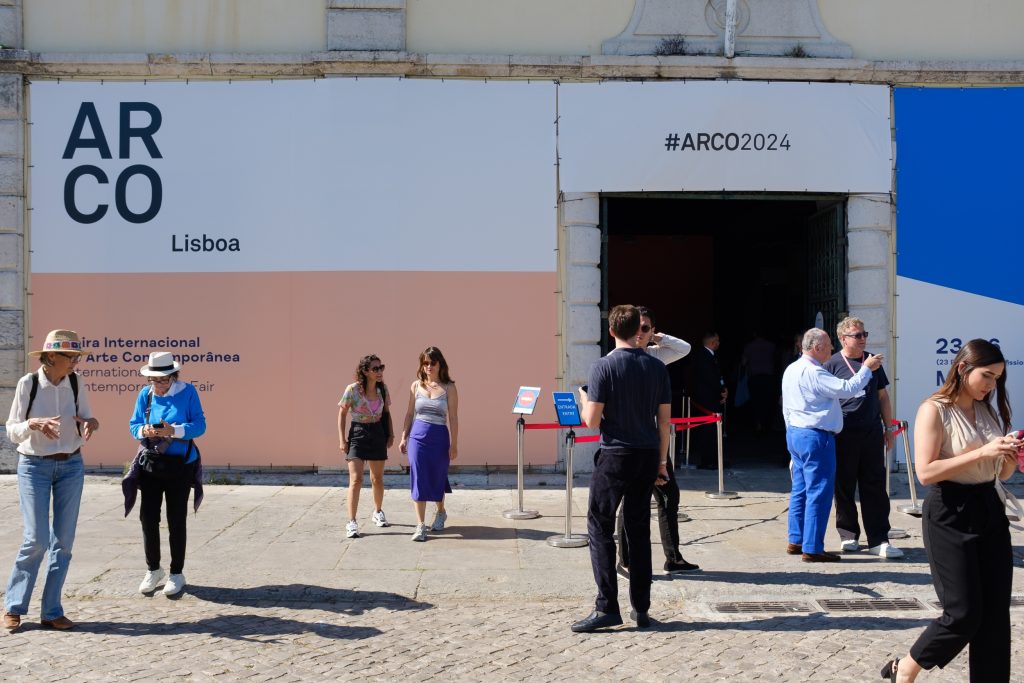
The Portuguese capital has plenty of burgeoning institutions but a dearth of collectors.

Jo Lawson-Tancred

An upbeat energy surged through ARCO Lisboa on the opening night of its seventh edition last Thursday, May 23. The small fair, an offshoot of IFEMA Madrid’s well-established ARCO Madrid, may not yet be an essential fixture on the international art world’s calendar, but it is clearly treasured by locals.
The location of Fábrica Nacional da Cordoaria, a historic ex-factory with wooden rafters, offers a welcome antidote to the mega fairs held in vast, soulless convention centers. You could discard your map, as the building’s length allows for an easy “straight up and back down” route with only a small detour for the “Solos” section of one-artist shows and the “Opening” section for younger galleries. Strolling through all 84 booths was a breeze.
Despite the upbeat mood, there’s no getting around the gloomier global picture as inflationary pressure has tightened collector purse strings and dampened sales on both the primary and secondary markets. Galleries have no choice but to be more picky about which fairs they exhibit at, a circumstance unlikely to help ARCO Lisboa’s ongoing struggle to attract international participants.
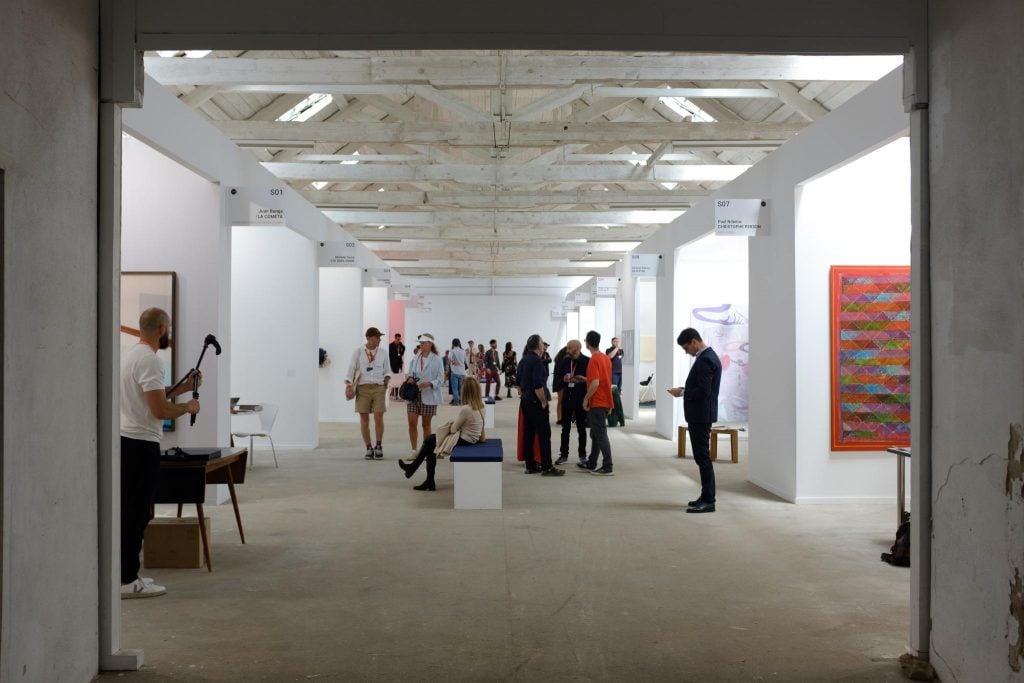
“Solos” section at ARCO Lisboa 2024. Photo: Rodrigo Gatinho, courtesy of IFEMA Madrid.
While the fair has continued to grow—71 galleries took part in 2019, pre-pandemic, compared to 84 in 2024—its geographical spread remains small. The number of countries represented shrank over that same five years from 17 to 15. Only 10 percent of galleries in the general program weren’t from Portugal or Spain, the latter of which accounted for nearly half of all exhibitors. By contrast, at its 43rd edition in March, ARCO Madrid welcomed 205 galleries from 36 countries. About one third were Spanish.
In Lisbon, Spanish booths were the flashiest, boasting big names like Picasso, Miró, and Antoni Tàpies within a sea of otherwise emerging or mid-career talent (save for one wonderful Paula Rego drawing at Galeria 111). ARCO’s director Maribel López said the fair controls the number of Spanish galleries, but these exhibitors also entice new collectors to the region, so they are vital for the fair’s survival. After all, when IFEMA Madrid first launched ARCO Lisboa in 2016, Portugal was barely out of the punishing financial crisis of 2010-14. The move raised eyebrows, seeming to reflect that period’s excessive proliferation of art fairs more than the Portuguese market’s fitness to sustain one.
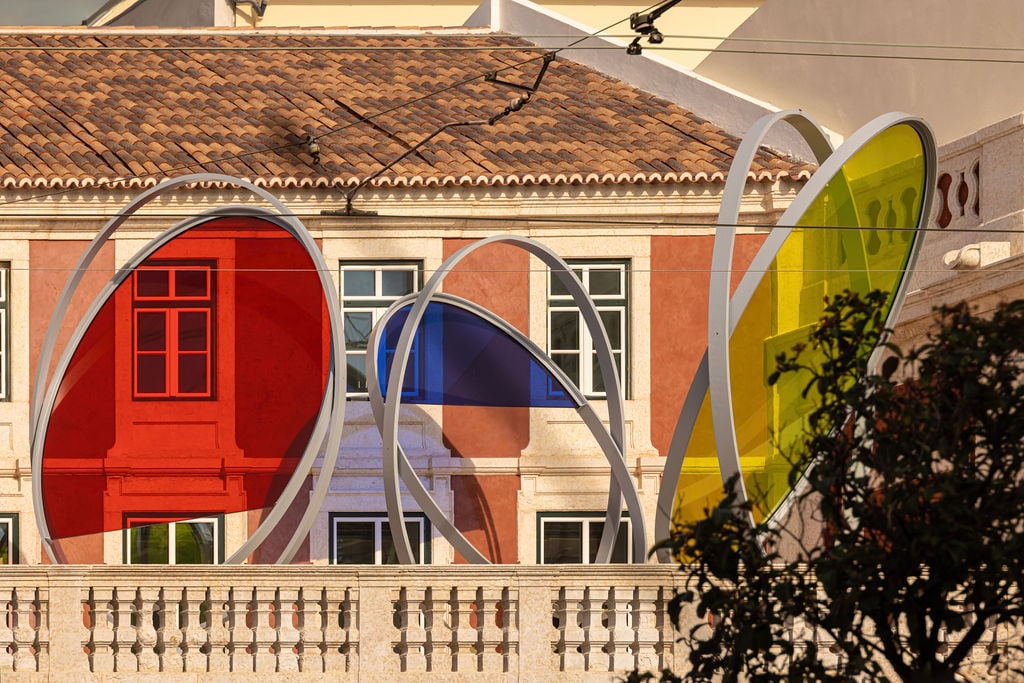
View of José Pedro Croft’s site-specific work installed at MACAM Hotel in Lisbon. Photo: © Fernando Guerra I FG+SG.
Nearing a decade on, Lisbon shows greater promise. The city’s hilly, charmingly tiled, but rough-around-the-edges character has a discernibly more cosmopolitan feel than Madrid. This is partly owed to an influx of expats, including tech professionals and wealthy businesspeople, lured by the Digital Nomad Visa and favorable Non-Habitual Residents tax regime. Their popularity put an end both schemes earlier this year.
As a cultural destination, Portugal’s capital keeps expanding its roster of more than 50 museums. Opening this fall is MACAM Hotel, a five-star boutique hotel-cum-modern art museum founded by collector Armando Martins. It features new commissions by Canadian artist Angela Bulloch and the sculptor José Pedro Croft, who represented Portugal at the Venice Biennale in 2017. Meanwhile, the landmark Calouste Gulbenkian Museum is set to unveil an impressive expansion designed by star Japanese architect Kengo Kuma on September 21.
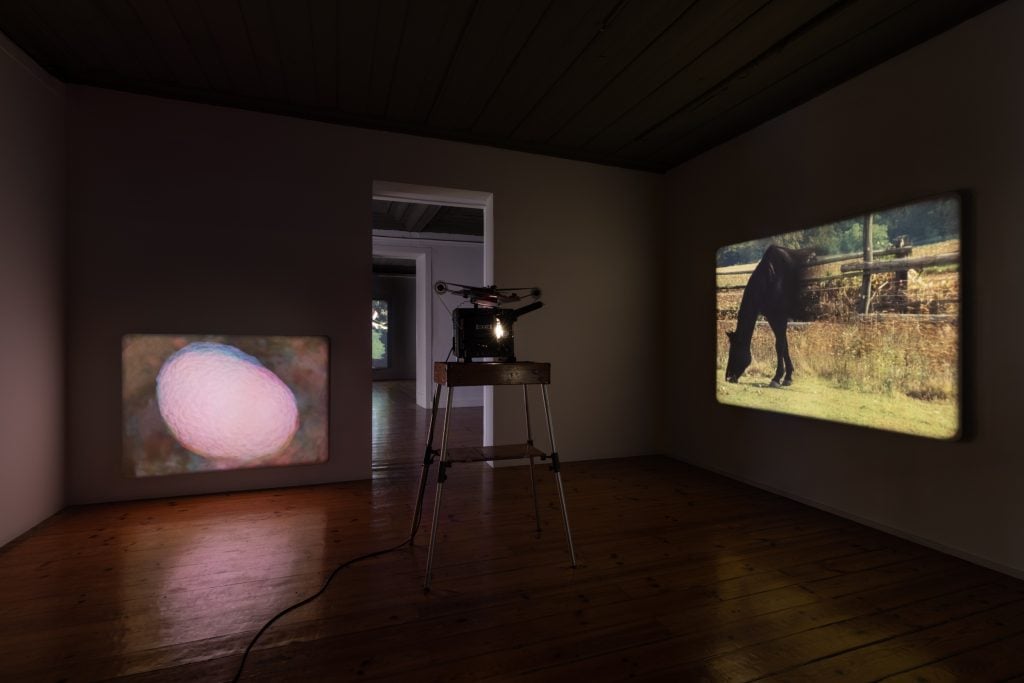
Installation view of João Maria Gusmão’s “Animal Farm” at Galeria Ze Dos Bois in Lisbon, Portugal. Image courtesy of Galeria Ze Dos Bois.
Against this backdrop, proclamations of Lisbon as “the new Berlin” began making headlines in the late 2010s as artists the world over flocked to enjoy the city’s lively milieu and cheap rent. It’s easy to see why. As well as the city’s five publicly funded municipal galleries for contemporary art, the artist-run Galeria Zé Dos Bois was founded as a non-institutional alternative in 1994. One of its latest shows, “Animal Farm” (until September 7), is an impressively well-produced installation by João Maria Gusmão filled with evocative, sun-drenched images of pastoral bliss with an unnerving edge. It was first presented at New York’s 99 Canal earlier this year.
Kindred Spirit is a new non-profit curatorial project that creates thoughtful pairings of work by a local and an international artist. Meanwhile, one of Portugal’s most renowned painters, Pedro Cabrita Reis, is presenting “Atelier,” a spectacular retrospective of his five-decade career staged across a fleet of airy pavilions in the up-and-coming, riverfront district of Marvila (through July 28).
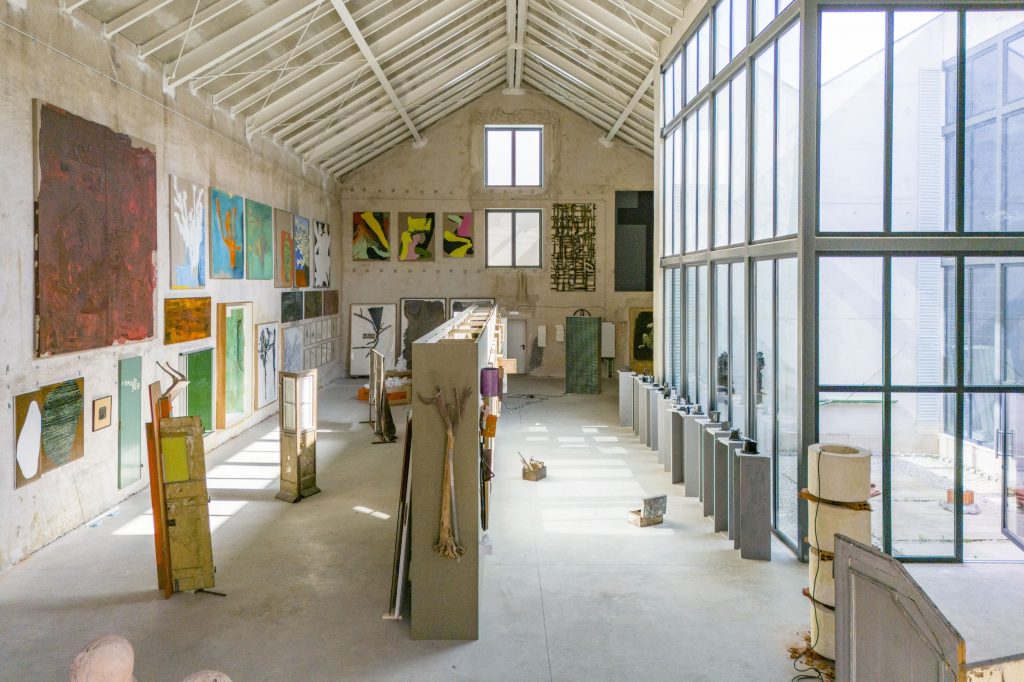
Installation view of Pedro Cabrita Reis, “Atelier” retrospective at Pavilhões da Mitra in Lisbon, Portugal. Photo: © PCR Studio / João Ferrand.
It is little surprise that the commercial galleries are slowly gaining a more international presence too, with some of the biggest names like Madragoa and Vera Cortês now participating at Frieze, Miart, Artissima, and Art Basel. There is no shortage of will or infrastructure in Lisbon, but are there enough serious collectors to sustain this burgeoning scene?
At a buffet lunch ahead of the fair’s VIP opening, two married Danish collectors who routinely visit fairs across Europe explained that they took a chance on Lisbon after enjoying ARCO Madrid. Though many collectors they knew from northern Europe were absent, they enjoyed mingling with a new, southern crowd and had just stopped off in the city of Porto en route to the capital, where they acquired three artworks already.
They enthused about the sun, sea, good wine, and food, only afterwards clarifying their collecting interest in South American and African art, both strengths of the Lisbon fair. Incidentally, 31 Project gallery reported selling a textile by Zimbabwean artist Georgina Maxim to Danish collectors just five minutes after opening.
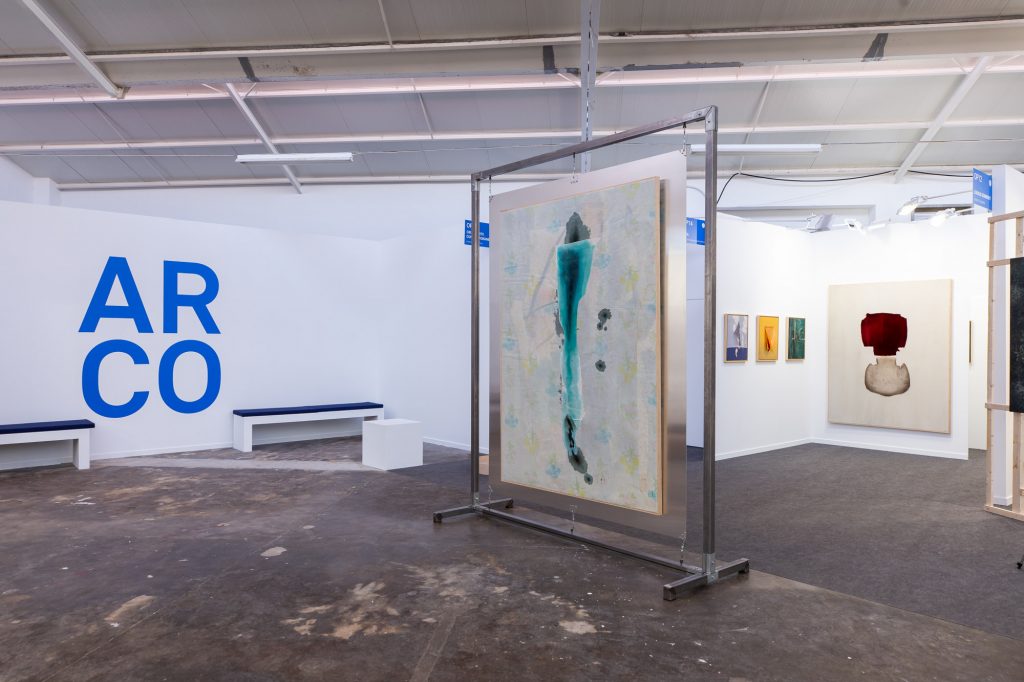
Installation view of Beta Contemporary gallery at “Openings” section of ARCO Lisboa 2024. Photo courtesy of Beta Contemporary.
For now, the fair’s international presence is heavily bolstered by its “Opening” section, which included galleries from Georgia, Romania, Argentina, and Colombia attracted by low booth prices of up to €2,000 ($2,162), according to one exhibitor. Meno Parkas from Lithuania returned after their participation last year led to a connection with curator Alicia Knock. She invited one of the gallery’s artists, Žilvinas Landzbergas, to participate in the Kaunas Biennial, which led to the Centre Pompidou acquiring one of his works. This year, the gallery made some sales to private collectors in Portugal.
One notable foreign presence in the main section was Charim Galerie from Vienna, which brought paintings by Eva Beresin, currently exhibiting at the Albertina. It sold one listed at €50,000 ($54,000) for an undisclosed sum.
The “Africa in Focus” section, established in 2019, has been rebranded as “The Shapes of the Ocean,” inviting galleries from France, Morocco, and Brazil. Curators Paula Nascimento, from Angola, and Igor Simões, from Brazil, chose the new theme to reflect Lisbon’s position on the edge of the Atlantic and consider not only African artists but “the shape of the Black experience across the world,” said Simōes.
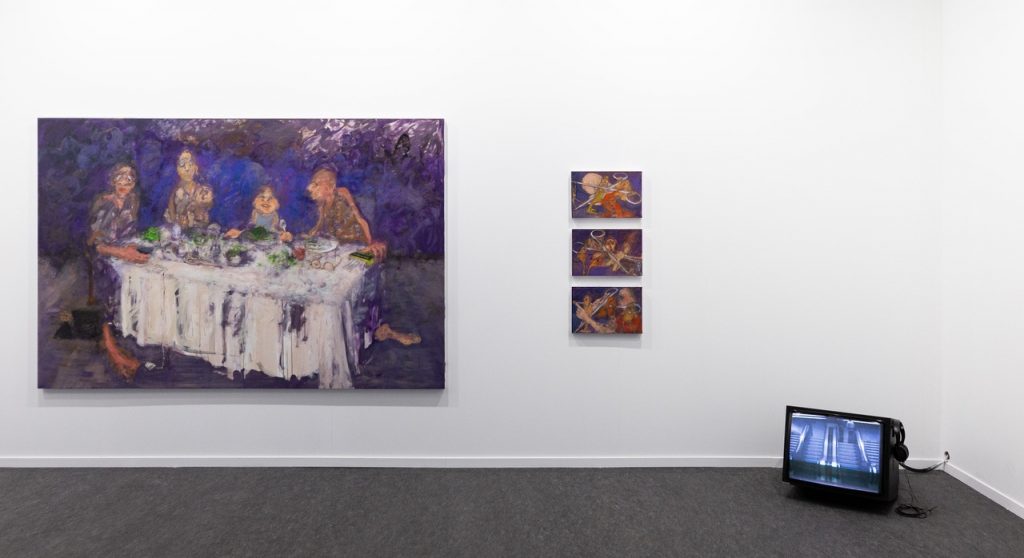
Left: Eva Beresin, Facing a Family, (2024); Eva Beresin, Cut The Bullshit I, II & III, (2024). Right: VALIE EXPORT, Metanoia, (1968-2011). Photo ourtesy of Charim Galerie, Vienna
One participant in this section, Christophe Person from Paris, showed floor mats by Ugandan artist Paul Ndema that sparked interest and facilitated introductions to many local collectors. “It was a great opportunity for contacts even if sales have been slow,” said Person, who had anticipated this outcome given wider market trends.
Meanwhile, Graça Rodrigues of This Is Not A White Cube, based in Lisbon and Luanda, Angola, said she met collectors from the U.S., France, Switzerland, Germany, the U.K., Hong Kong, Haiti, and Brazil, many of whom were tech professionals based in Lisbon. She made sales between €5,000 and €15,000 ($5,400 to $16,200).
On Friday, at yet another buzzy opening, this time hosted by insurance company Fidelidade’s well-respected public gallery in the historic center, chatter turned to the future of ARCO Lisboa. A London gallerist who has been making annual visits to Portugal for the past few decades expressed concern that Madrid—described as Lisbon’s “richer cousin”—might overshadow and ultimately stifle the city’s nascent art market if IFEMA Madrid fails to achieve the right balance of exhibitors. This raised the question, is it time for ARCO Lisboa to get its own Portuguese director?
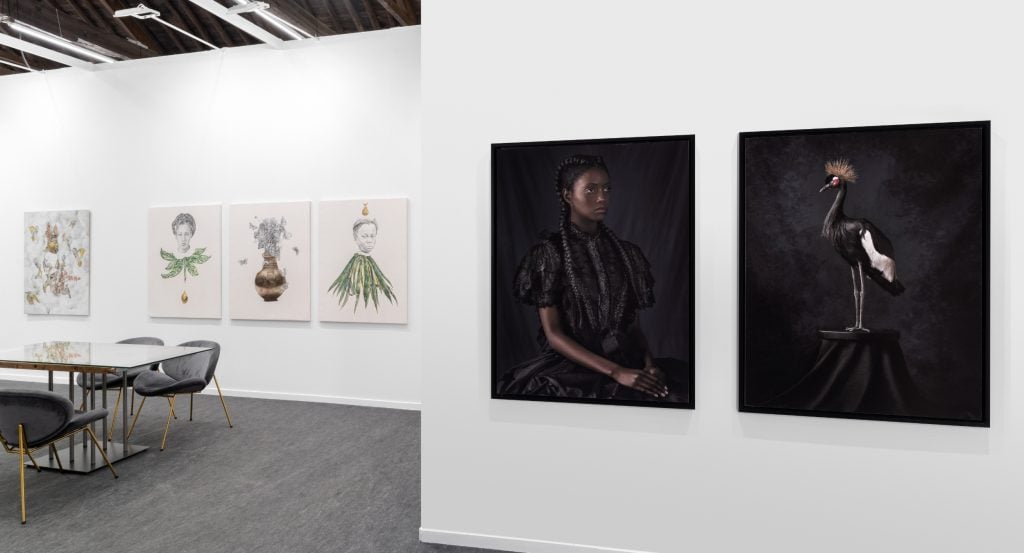
This Is Not A White Cube gallery installation at ARCO Lisboa 2024. Photo courtesy of This Is Not A White Cube.
Across town, a glamorous throng of artists and dealers filled a garden party hosted by local Lisbon gallery Foco and Paris-based Romero Paprocki at the artist Pauline Guerrier’s apartment, which feels like a lived-in film set complete with a swimming pool. There, an Italian gallerist who has worked in Lisbon for many years estimated that there exists no more than 10 major Portuguese collectors. She was hopeful, however, that in the coming years Portuguese galleries will start forging connections with the international market, with less reliance on Madrid.
For their part, ARCO Lisboa’s organizers feel on track with their founding mission. “It’s a very focused fair that doesn’t have an ambition to be huge,” according to “Openings” curator Luiza Teixeira de Freitas.
“Lisbon is having a boom and I’m not even thinking of expats,” she adds. “This generation of Portuguese entrepreneurs have the means to collect, they just need to be educated.” The global context is grey, but the mood in Lisbon is sunny.